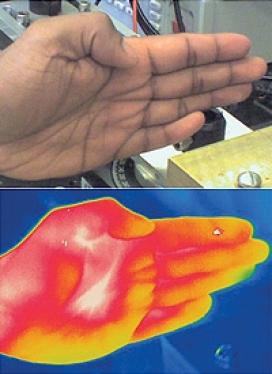Non-Invasive Glucose Sensors for Diabetes Management Moving Toward Clinical Trials
A Princeton University Intellectual Property (IP) Accelerator Fund grant award is helping researchers advance their technology for pinprick-free blood glucose diabetic testing forward to clinical trials and another step closer to the marketplace. The Fund helps bridge the development gap between early-stage research at the University and attractive opportunities for companies and other organizations that wish to further develop the technologies. The glucose sensors were developed with support from the NSF-funded Mid-Infrared Technologies for Health and the Environment (MIRTHE) Engineering Research Center (ERC), headquartered at Princeton.
Diabetes can lead to major health issues, yet many people find it difficult to measure their blood sugar levels due to the pain, cost, and inconvenience associated with finger-pricking to draw blood. Researchers led by Claire Gmachl, the Eugene Higgins Professor of Electrical Engineering and Director of MIRTHE, developed a laser-based system that measures blood glucose levels through the skin, without requiring a painful prick to draw blood. Compared to the current method of drawing and testing a drop of blood, the innovation could provide much more control over diabetes. The system, which shines a pulsed, mid-infrared quantum cascade laser on an individual’s wrist or finger, has been tested on patients with diabetes with promising results. The IP Accelerator grant will enable further research to make the system easier to use in clinical and home settings. The research team plans to build a next generation prototype with enhancements to the sensor hardware and software. The team also plans to collaborate with Princeton-area clinics to test the sensor.
Health systems have an unmet demand for glucose testing that is non-invasive, accurate, can be done in patient care settings, and is cheap. The clinical market for non-invasive testing is huge. In the United States and across the globe, there are tens of millions of type 2 diabetics and hundreds of millions of pre-diabetics.
Researchers are working on many fronts to advance non-invasive tests for diabetes and other conditions, but innovations—especially in healthcare—have a long path to approval and production of commercial products and processes. To enhance laboratory research and future commercial potential, MIRTHE researchers developed an ongoing dialogue with business leaders, investors, medical researchers, and other scientists and engineers through activities such Investment Focus Group workshops that introduce the technology and share research progress and potential applications.



